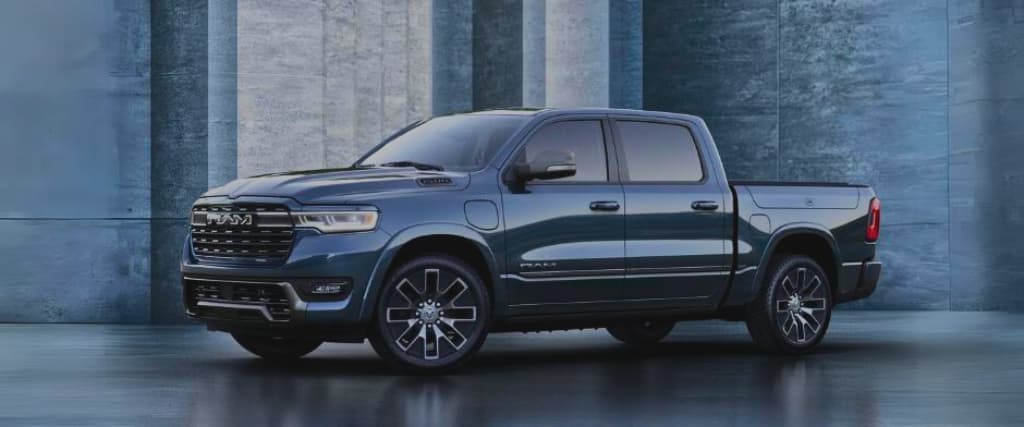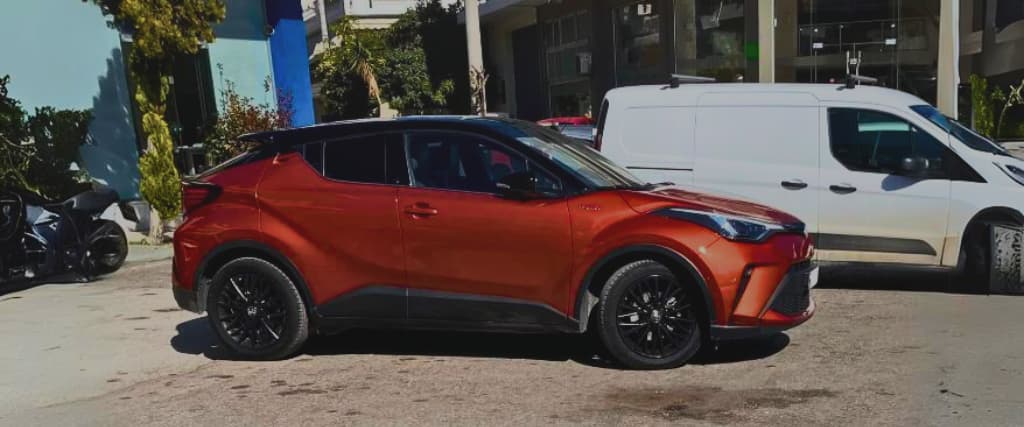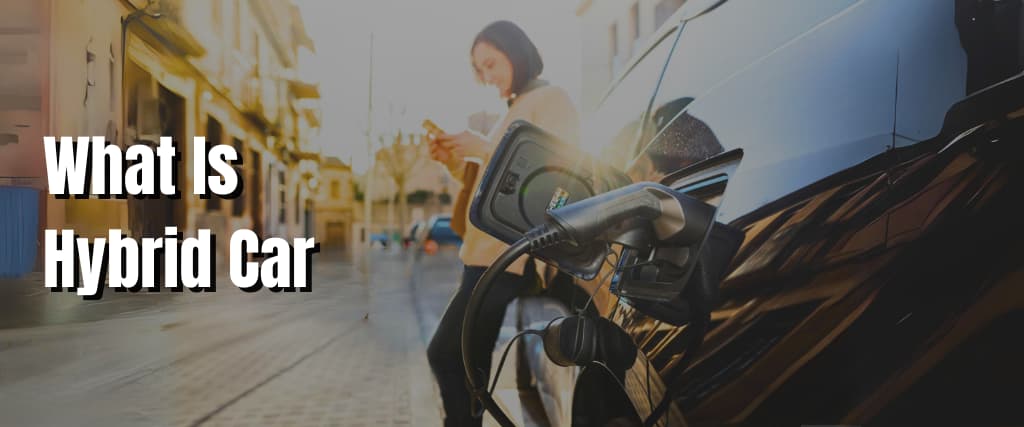As more drivers look for ways to save money on fuel costs, they are turning to hybrid cars. These have a traditional combustion engine paired with at least one electric motor to reduce fuel usage and increase fuel efficiency. The difference between hybrid car models is the power source for the electric motor.
All hybrid vehicles have a high-voltage lithium-ion battery pack and the typical 12-volt battery that runs the alternator. Most have regenerative braking systems to recharge the lithium-ion battery. The petrol engine also charges the battery pack, and some models have a plug-in option for recharging at home and on the road.
What Is a Hybrid Car?
A hybrid car combines a combustion engine with an electric motor. Several hybrid options use a variety of powertrains.
Parallel Hybrid
Parallel hybrid vehicles have a combustion engine and electric motor that work together with a single transmission, usually an automatic or continuously variable transmission.
The transmission dictates how the vehicle accelerates and how much fuel it needs. In a parallel hybrid, the combustion engine and electric motor rarely function separately thanks to the transmission. Parallel-hybrid vehicles perform like a vehicle with a combustion engine, and they don’t have the quiet acceleration that most fully-electric cars have.
A popular parallel hybrid is the Toyota RAV4 Hybrid, and many other carmakers use similar technology to reduce fuel usage.
Series Hybrid

A series hybrid relies on the electric motor for thrust, while the petrol engine serves to recharge the battery. The electric motor powers the axles in the drivetrain, but the combustion engine does not. Because the combustion engine does not drive the vehicle, series hybrids feel like a fully-electric car with powerful acceleration and a quiet ride.
In a series hybrid, the combustion engine might be revving to recharge the battery at unexpected times. Some electric vehicles with range extenders, like the BMW i3, have a series hybrid engine.
Plug-in Hybrid
Plug-in hybrids require an external electricity source to recharge the battery. Most have short all-electric ranges between 24 and 80 kilometres. After the battery power is used up, the car becomes a parallel hybrid, with more reliance on the combustion engine.
This type benefits people with short daily commutes and the ability to recharge nightly. Running on electric power significantly reduces fuel expenses. Plug-in hybrids are also popular because drivers can take them on long road trips without developing range anxiety, as they can stop at a petrol station and fill up the tank.
A plug-in can also be a series hybrid, but most have parallel technology. When accelerating, the electric motor delivers impressive horsepower and torque, giving drivers the experience of driving an EV.
Many plug-in hybrids have quiet electric motors and one-pedal driving, like full EVs. Popular models include the BMW 3 Series and the MINI Countryman.
The cost of charging a plug-in overnight is significantly lower than a litre of petrol. Considering how many kilometres plug-in hybrids get from the electric motor, charging the battery saves owners a significant amount in the long run.
Mild Hybrid
The mild hybrid is a variation of the parallel without the full hybrid technology. In most mild hybrids, the electric motor cannot move the vehicle, except for a kilometre or two. Mild hybrids have electric motors that help the combustion engine to improve fuel economy. Cars with mild-hybrid technology include the Mazda MX-30 and Volvo XC-60.
Mild-hybrid technology also powers automatic start-stop features in many models. As a fuel-saving feature, the engine shuts down when the vehicle comes to a complete stop. Then, the electric motor engages to keep the climate system running. When the driver steps off the brake, the combustion engine restarts and the vehicle can move.
Alternative Hybrids
As hybrids become more popular, carmakers are engineering new combinations of electric motors and combustion engines. Some models rely on the engine to generate the electric motor, but the same powertrain can use it to move the wheels.
Other vehicles have engines that power the front axle and motors that power the rear axle for fuel-efficient all-wheel drive.
Advantages of Driving a Hybrid Car

All vehicles have pros and cons, but it’s helpful to know how a hybrid car will change your driving experiences.
Eco-friendly Driving
Because hybrid cars use less fuel than vehicles without electric motors, they tend to be more environmentally friendly. They have lower emissions, so drivers reduce their carbon footprints, even though they have tailpipes and traditional exhaust systems.
Drivers with hybrid vehicles often get between 14 and 21 kilometres per litre, making them much more fuel efficient than a car with a typical combustion engine.
Less Maintenance
Hybrid cars use the battery and electric motor to power the vehicle which means the combustion engine has less wear and tear. That results in lower maintenance costs.
Drivers with plug-in hybrid vehicles have longer intervals between oil changes because the electric motor does not require oil. Cars with regenerative braking and one-pedal driving need fewer brake repairs and replacement maintenance because the brake pedal is not used as often.
Better Resale Value
As more drivers want hybrid cars, you could see a greater return on your investment when you trade in or sell yours. Some used-car buyers are paying more for hybrids than the sticker prices on new models.
No Range Anxiety
Drivers with fully-electric vehicles only have the electric motor and battery pack to power their cars. So, when the battery runs out, the vehicle cannot go. In contrast, hybrids still use petrol to power the combustion engine. When the fuel level drops, drivers can fill up at the petrol station. They don’t have to worry about waiting for hours to recharge the battery.
More Power Under the Hood
Some hybrid vehicles, especially plug-ins, have impressive power under the bonnet. Cars with combustion engines have to rely on the transmission while accelerating, which slows the zero to 100 KPH thanks to shifting and timing chains.
Plug-in hybrids still have transmissions, but during acceleration, the electric motor can take over, giving the vehicle a surprisingly speedy KPH time.
The Technology is Tested
Hybrid technology is becoming the norm, so consumers can trust the powertrains. Since people don’t buy cars often, investing in a vehicle with “new” technology can be disconcerting. Fortunately, hybrid powertrains have been moving cars since at least 1999, and nearly all car makers offer hybrid vehicles—especially the mild variety.
Because the hybrid powertrains are reliable, shoppers have several choices. You can buy hybrid sedans and crossover SUVs. Even full-size utes like the Ford F-150 come with a hybrid powertrain.
Disadvantages of Driving a Hybrid Vehicle

The advantages outnumber the disadvantages, but it’s always wise to know what could happen when you buy a hybrid car.
Some Repairs Are Expensive
All hybrid vehicles have an electric motor and a battery pack. In plug-in hybrid vehicles, the battery is larger than those in mild hybrids. When the battery fails, the cost to replace it is significantly more than the typical 12-volt battery. In some models, the battery prices range between $8,000 and $50,000.
In addition, hybrid vehicles have complex parts that pair the combustion engine with the electric motor. Those are always covered under warranty, but once the warranty ends, the owner has to cover the costs of repairing the expensive components.
Not All Repair Technicians Know How To Fix Hybrid Vehicles
Your favourite local car repair shop might be able to fix your hybrid vehicle. After you buy a hybrid car, you’ll probably have to take it to the dealership for repairs. Dealership service usually costs more than repairs at local shops.
Hybrid Cars Have a Higher Price
All vehicles cost more today, but hybrids automatically come with a higher sticker price than vehicles with internal combustion engines. Fortunately, there are many government incentives for people who purchase hybrid and electric cars, trucks, and utes.
Despite the higher prices, the cost to own a hybrid vehicle is lower than a traditional alternative. Indeed, the reduced fuel needs make the cost of ownership lower. Hybrid vehicle drivers often find that the expense is worthwhile as the vehicle has a smaller environmental impact thanks to reduced emissions.
Less Horsepower in Some Models
While many plug-in hybrid vehicles have more horsepower and torque than their combustion engine counterparts, mild hybrid or parallel hybrid cars are slower.
With lower CO2 emissions and improved fuel economy, hybrid vehicles rarely have slower acceleration. However, you might find a few with different modes that use the transmission to offer more power when needed. If horsepower is important to you, read the vehicle specifications before making your purchase.
More Drivers Are Choosing Fully-Electric Vehicles
Hybrid vehicles offer several benefits, but many are buying more fully electric options. As EVs take over the market, hybrids could become outdated quickly.
Final Thoughts
A hybrid car uses a combustion engine with an electric motor. The combination of these two modes helps drivers make the shift towards more environmentally friendly vehicles. Moreover, hybrids offer cost savings on petrol and maintenance while delivering a high degree of power and range compared to fully-electric models.


